Quick answer: Amenorrhea is any missing period, while menopause is the natural, permanent end of periods after 12 consecutive months without bleeding. Both involve “no period,” but the reasons, age ranges, and health implications are very different.
Why it matters: Understanding whether your absent cycles are a normal life stage or a sign that something else needs attention decides the tests, treatments, and peace of mind you’ll get. Let’s break it down together, step by step.
Comparison Table
| Feature | Amenorrhea | Menopause |
|---|---|---|
| Definition | Absence of menstrual bleeding (primary or secondary) | Permanent cessation of periods ≥ 12 months, natural aging of ovaries |
| Typical age | Any age (teen – adult) | 45‑55 years (average) |
| Main causes | Pregnancy, hormonal disorders, stress, extreme weight change, PCOS, thyroid/pituitary disease, medications, structural issues | Declining ovarian estrogen, rising FSH, thyroid changes, surgical removal of ovaries |
| Symptoms that overlap | Hot flashes, night sweats, vaginal dryness (when estrogen is low) | Same as above |
| When to see a doctor | 3 + missed cycles or never had first period by 16 | Irregular bleeding before 45, severe menopause symptoms, or uncertainty |
| Typical labs | β‑hCG, TSH, prolactin, FSH, estradiol | FSH ↑, estradiol ↓ (often FSH > 30 IU/L) |
This side‑by‑side view lets you see at a glance what’s likely driving your missed period.
Amenorrhea Basics
What is amenorrhea?
Amenorrhea simply means “no period.” It’s a symptom, not a disease—a sign that something in the hormonal orchestra isn’t playing in tune. There are two flavors:
- Primary amenorrhea: No period by age 16 (or by 15 if secondary sexual characteristics haven’t appeared).
- Secondary amenorrhea: Missed three or more consecutive cycles after you’ve already had regular periods.
According to Healthline, secondary amenorrhea is far more common, especially in women juggling intense workouts or stress.
Primary vs. secondary – how to tell which you have
If you’ve never had a period and you’re past the teen years, you’re looking at primary amenorrhea. If you used to get your period like clockwork and it suddenly stopped, that’s secondary. The distinction matters because the diagnostic pathways differ.
Top amenorrhea causes (amenorrhea causes)
Let’s list the usual suspects, and then we’ll dig into a couple of real‑life stories.
- Pregnancy: By far the most common cause of a missed period.
- Hormonal imbalances: Thyroid disease, prolactinoma, polycystic ovary syndrome (PCOS), low body fat or extreme weight loss.
- Stress & exercise: High‑intensity training or chronic emotional stress can shut down the hypothalamic‑pituitary axis.
- Medications: Certain antipsychotics, chemotherapy, and hormonal contraceptives can pause bleeding.
- Structural/genetic issues: Turner syndrome, Müllerian agenesis, or uterine scarring from previous surgeries.
Case vignette: the marathon runner
Emma, 28, ran a half‑marathon three times a week and recently dropped 15 % of her body weight to qualify for a sprint race. She missed her period for four months and felt foggy. Her doctor ordered a hormone panel: low estradiol, normal FSH, and a slightly elevated cortisol. The diagnosis? Exercise‑induced hypothalamic amenorrhea. The treatment plan? Gradual increase in caloric intake, a short break from high‑intensity runs, and a low‑dose oral contraceptive to protect bone health.
How doctors diagnose amenorrhea
Step 1: Rule out pregnancy with a serum β‑hCG test. Step 2: Order a hormone panel—FSH, LH, estradiol, TSH, and prolactin. Step 3: If labs hint at a pituitary or thyroid problem, imaging (MRI of the brain or ultrasound of the pelvis) may follow. According to the American Academy of Family Physicians, a thorough work‑up can uncover a hidden tumor or thyroid disorder early, which is why it’s essential not to self‑diagnose.
Amenorrhea treatment options (amenorrhea treatment)
Here’s a quick‑do checklist you can share with your clinician:
- Address the root cause: Nutrition counseling for low weight, stress‑management techniques, adjusting or stopping offending meds.
- Hormone therapy: If estrogen is low, a low‑dose estrogen‑progestin pill can protect bone density and relieve vasomotor symptoms.
- Specific therapies: Thyroid replacement for hypothyroidism, dopamine agonists (e.g., cabergoline) for prolactin‑secreting tumors, metformin for PCOS.
- Lifestyle tweaks: Balanced diet, moderate exercise, adequate sleep, and mindfulness practices.
Remember, amenorrhea treatment isn’t one‑size‑fits‑all; it mirrors the underlying cause.
Menopause Basics
What is menopause?
Menopause is the natural, permanent end of menstrual cycles. Technically, you’re post‑menopausal when you’ve gone 12 consecutive months without bleeding and aren’t pregnant, breastfeeding, or using hormonal contraception. It’s not a disease—just a phase of life.
Typical menopause symptoms (menopause symptoms)
The unwelcome guest most women notice is the hot flash. You might also experience night sweats, sleep disturbances, mood swings, vaginal dryness, and a gradual loss of bone density. Some women breeze through, while others feel a cascade of changes.
Hormone changes that mark menopause
During the transition, ovaries produce less estradiol (E2). In response, the pituitary releases more follicle‑stimulating hormone (FSH) and luteinizing hormone (LH). A serum FSH > 30 IU/L is a strong indicator of menopause, especially when estradiol is low. Thyroid‑stimulating hormone (TSH) can shift a bit, but it’s not a primary marker.
Lab confirmation
Doctors usually order:
- FSH (high)
- Estradiol (low)
- Optional: Anti‑Müllerian hormone (AMH) to gauge remaining ovarian reserve.
These tests help differentiate true menopause from premature ovarian insufficiency or other causes of secondary amenorrhea.
Menopause treatment & management (menopause treatment)
There’s a toolbox, and the best option depends on your severity, health history, and personal preferences.
- Lifestyle first: Calcium‑rich foods, vitamin D, weight‑bearing exercise, and quitting smoking keep bones strong and may ease vasomotor symptoms.
- Hormone therapy (HT): Low‑dose estrogen (often transdermal) with or without progesterone can dramatically reduce hot flashes and protect bone density. The North American Menopause Society (2024) recommends using the lowest effective dose for the shortest time needed.
- Non‑hormonal options: SSRIs (like paroxetine), gabapentin, or herbal supplements such as black cohosh. Evidence is mixed, so talk to your provider.
- Bone‑health meds: If you’re at high risk for osteoporosis, bisphosphonates or selective estrogen receptor modulators (SERMs) may be added.
Personal story: Maya’s low‑dose transdermal plan
Maya, 52, was terrified of “the hot flash tsunami” after her periods vanished. After a thorough risk assessment, she chose a 0.025 mg transdermal estradiol patch, applied twice weekly. Within weeks, her night sweats eased, and a quick bone‑density scan showed stable mineral levels. Maya’s experience underscores how a tailored HT plan can restore comfort without over‑medicating.
Overlap Explained
How menopause causes secondary amenorrhea
When estrogen drops dramatically, the uterine lining can’t regenerate, so periods stop. In that sense, menopause is a specific, age‑related type of secondary amenorrhea.
Red‑flag signs that “missing periods” isn’t menopause
If you’re under 40, have a rapid onset, or notice additional symptoms like galactorrhea (unexpected breast milk), vision changes, severe weight fluctuations, or a palpable pituitary mass on imaging, you’re likely dealing with something other than menopause. Those signs should trigger a full hormonal work‑up.
Diagnostic algorithm (quick flowchart)
Here’s a mental map you can run through next time you’re unsure:
- Age ≥ 45? Probably menopause, but keep going.
- Pregnancy test negative? If positive, congratulations (or relief) – amenorrhea solved.
- FSH high + estradiol low? Menopause confirmed.
- Otherwise: Investigate other amenorrhea causes—thyroid panel, prolactin level, weight/body‑fat assessment, stress questionnaire.
Self‑Care Checklist
Track
Use a period‑tracking app or a simple calendar. Mark every day you bleed, note any spotting, and jot down accompanying symptoms (hot flashes, mood changes, sleep quality).
Note meds & lifestyle
Write down prescription drugs, over‑the‑counter supplements, and your weekly exercise routine. This snapshot helps your provider pinpoint the cause.
Schedule labs when needed
- Missed 3 consecutive cycles → β‑hCG + hormone panel.
- Age 45‑55 with irregular cycles → FSH/estradiol test.
Discuss with your clinician
Bring your chart, ask about menopause treatment options, and be open about stress, diet, and exercise. The more information you share, the sharper the diagnosis.
Conclusion
Amenorrhea = any missing period; menopause = the natural, permanent end of periods. Spotting the age, pattern, and hormone test results lets you tell them apart and choose the right care—whether that’s a lifestyle tweak, hormone therapy, or a deeper medical work‑up.
If you’ve missed three cycles or are navigating the mid‑40s and feel unsure, book a visit, bring your cycle log, and let your provider run the simple labs that will give you clarity and a personalized plan. You deserve answers, support, and a path that feels right for you.
What’s your experience with missed periods? Share your story in the comments, ask questions, or pass this guide along to a friend who might need it. Together we can turn confusion into confidence.

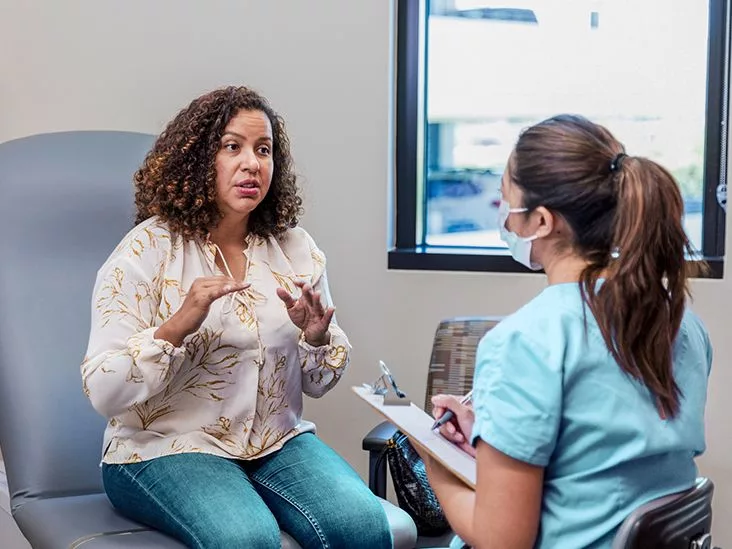

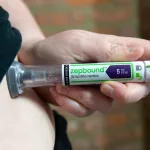


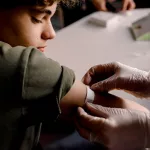

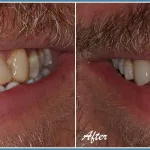
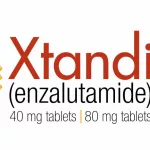



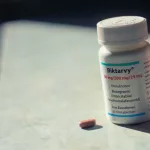

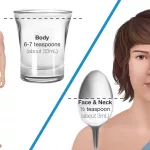
Leave a Reply
You must be logged in to post a comment.